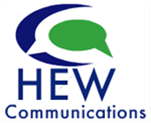
If you’re reading this post on Friday morning, I’m either winging my way to or already happily ensconced at Bouchercon in Cleveland, where authors, readers, librarians, publishers, and all who support bringing great stories to readers gather to celebrate books. That Bouchercon coincides with Banned Books Week this year is appropriate. The freedom to choose to read whatever we like (or not read what we don’t) is, to me, sacred.
Sheila at Book Journey has done an amazing job of gathering up book bloggers to share what Banned Books Week means to them. Please stop by and have a read.
And because I hope that one day we won’t need to celebrate Banned Books Week at all, I’m giving away bookmarks from the ALA collection. To enter to win one, just leave a comment here.
Whether you realize it or not, chances are good that you’ve been affected by a banned book. Here’s a list of the most commonly challenged books in the United States; I guarantee that some of the titles will surprise you.
Here—in alphabetical order—are some of the banned/challenged books that have shaped me as both a reader and a human being…
THE ADVENTURES OF HUCKLEBERRY FINN and THE ADVENTURES OF TOM SAWYER by Mark Twain
As a kid, I figured these were boys’ books and I wasn’t going to like them. My dad explained to me that they are important books, ones I needed to read first and then (as if that wasn’t enough) learn the context of them. Understand why the depiction of American Southern vernacular was important when they were published and mattered still…that kind of thing. What I was not expecting is that Huck Finn, especially, would be a thriller. That these stories would grab me and hold one. That they would be as honest as they are. And of course dad was right; much of my understanding of the world around me comes from a curiosity inspired by these books.
ARE YOU THERE GOD? IT’S ME, MARGARET, BLUBBER, FOREVER, and TIGER EYES by Judy Blume
As much as I classified the above as boys’ books, these were (and, truth be told, still are) girls’ books, in my eyes. I loved them because they were dramatic. Could I identify with them? I’m sure I could, but that’s not what’s stayed with me. What I remember from these books is caring passionately about the characters and the stories they were involved in. They were…wait for it…better than TV. And they still are.
THE CHOCOLATE WAR by Robert Cormier
This is one of the first books I remember reading repeatedly. Because I was mercilessly teased (today it would be called bullying) all through elementary school, and subject to the mob rule that is unique in school settings, I saw myself in the story. And for the record, this one is crime fiction too, no matter what shelf it’s found on.
THE GREAT GATSBY by F. Scott Fitzgerald
This is another book that shaped my perception of and participation in American society. And again, were it published today, it would be called crime fiction…because it is.
OF MICE AND MEN by John Steinbeck
This is the first book I read that I felt was about my people. My ancestors were running around the Southern United States and Ireland in the 1920s, but they were from the same stock as George and Lennie. This is also the first book I remember making me cry. It still does.
TO KILL A MOCKINGBIRD by Harper Lee
The honesty, beauty, tension and humor of this story haunt me to this day. While the aspects of the story that deal with class, race, and compassion are probably the most frequently discussed, the book also makes the best argument for the importance of reading with kids that I’ve ever seen. When I read it first, I was Scout. I am still Scout.
This is far from a complete list, but you get the idea. That there are people in this country who will never read the books above because someone decided to remove them from schools or library shelves is horrifying to me. Each is, in its own way, likely going to be slightly uncomfortable for some readers (or their parents, teachers, friends, or colleagues), and that’s exactly why we must celebrate them, not ban them.
Thank you for reading.


This is a wonderful post! Thank you for sharing your attachment to each of these books. I want to re-read them all now! It is amazing how many of us can identify with the very characters that a select few wish to ban.
Rebecca @ The Key to the Gate
What a great post! The only one of those I haven’t read is The Chocolate War, but I’ve requested it from my library because I’ve heard so many wonderful things about it this week!
Never ceases to amaze me that people can be so threatened by mere words of fiction. Great post.
Awesome post! I too was surprised by the ALA lists—so many amazing, important works there. So important for young people to read them, too. My favorites on your list are “Of Mice and Men” and “To Kill a Mockingbird.” Like Jennifer, I need to read “The Chocolate War” as well! Thanks for sharing.
Thank you for a brilliant post. I am suprised by quite a few titles on the list of banned books, such as a childhood favourite of mine ‘Huckleberry finn’ and also ‘of mice and men’ which i studied at school for English Literature. x
Email: lfountain1(at)hotmail(dot)co(dot)uk
Of Mice and Men made me cry too. I love Tom Sawyer and Huck Finn. I haven’t read the Chocolate War yet, but I will very soon.
tanjavrljic At gmail DOT com